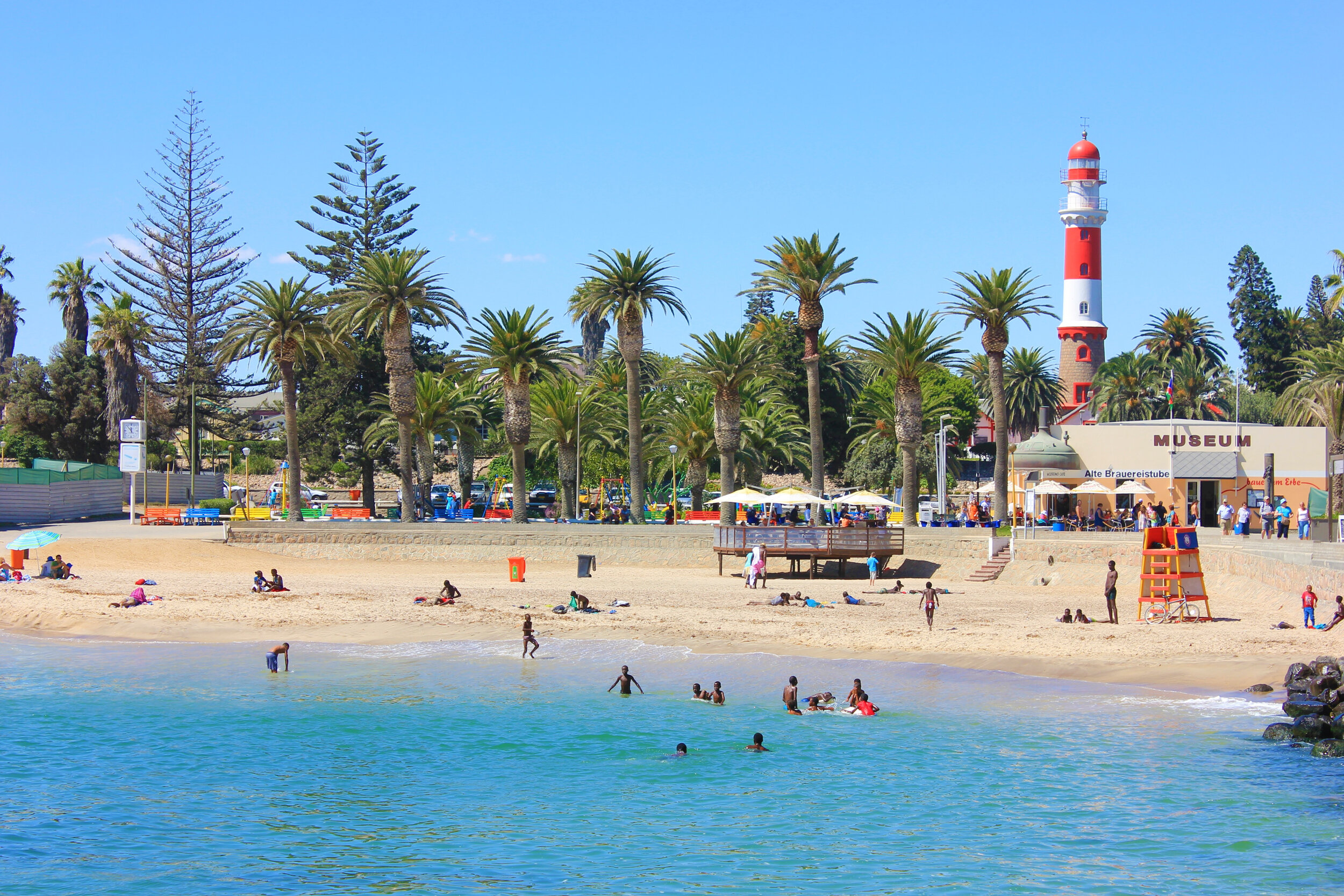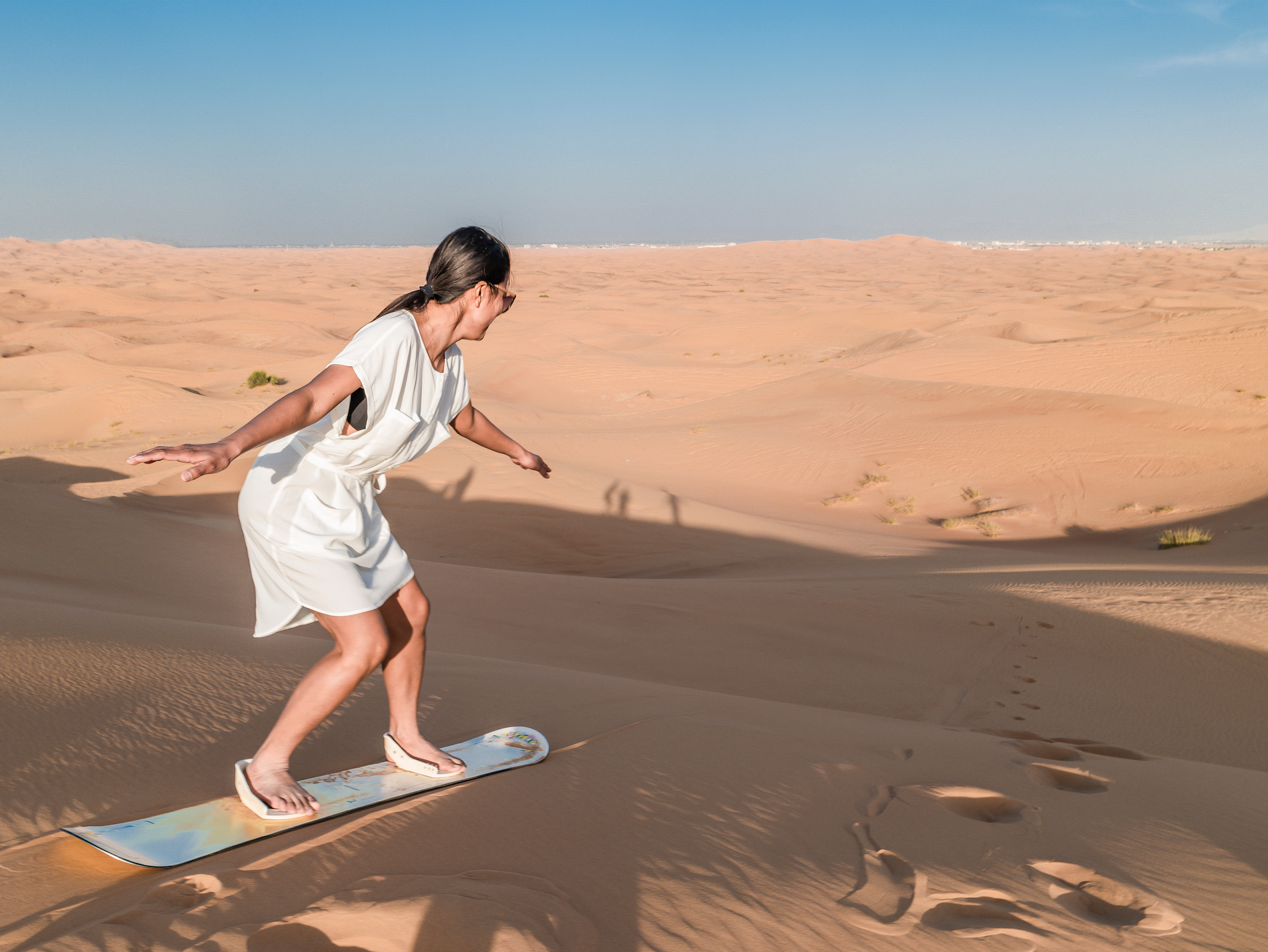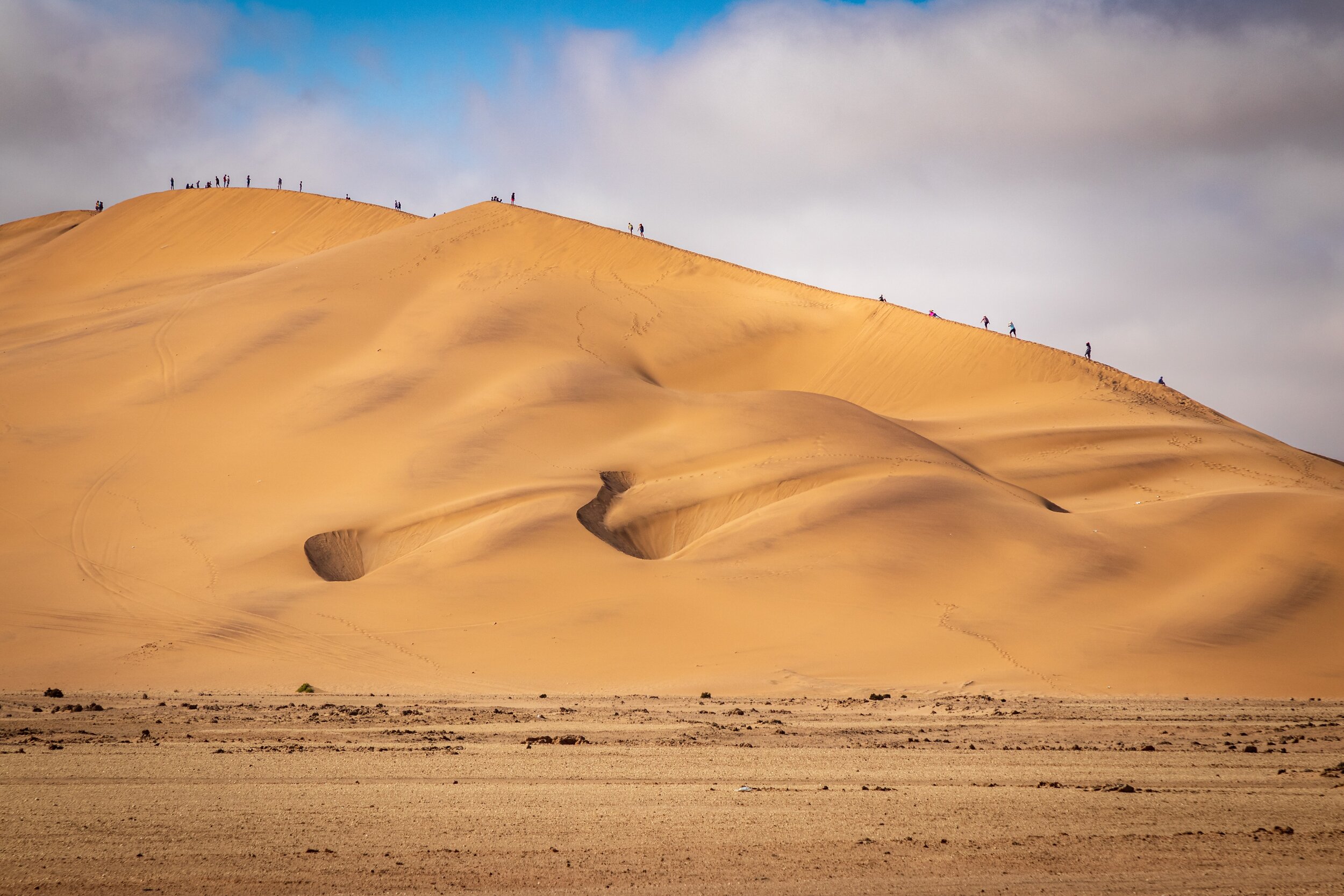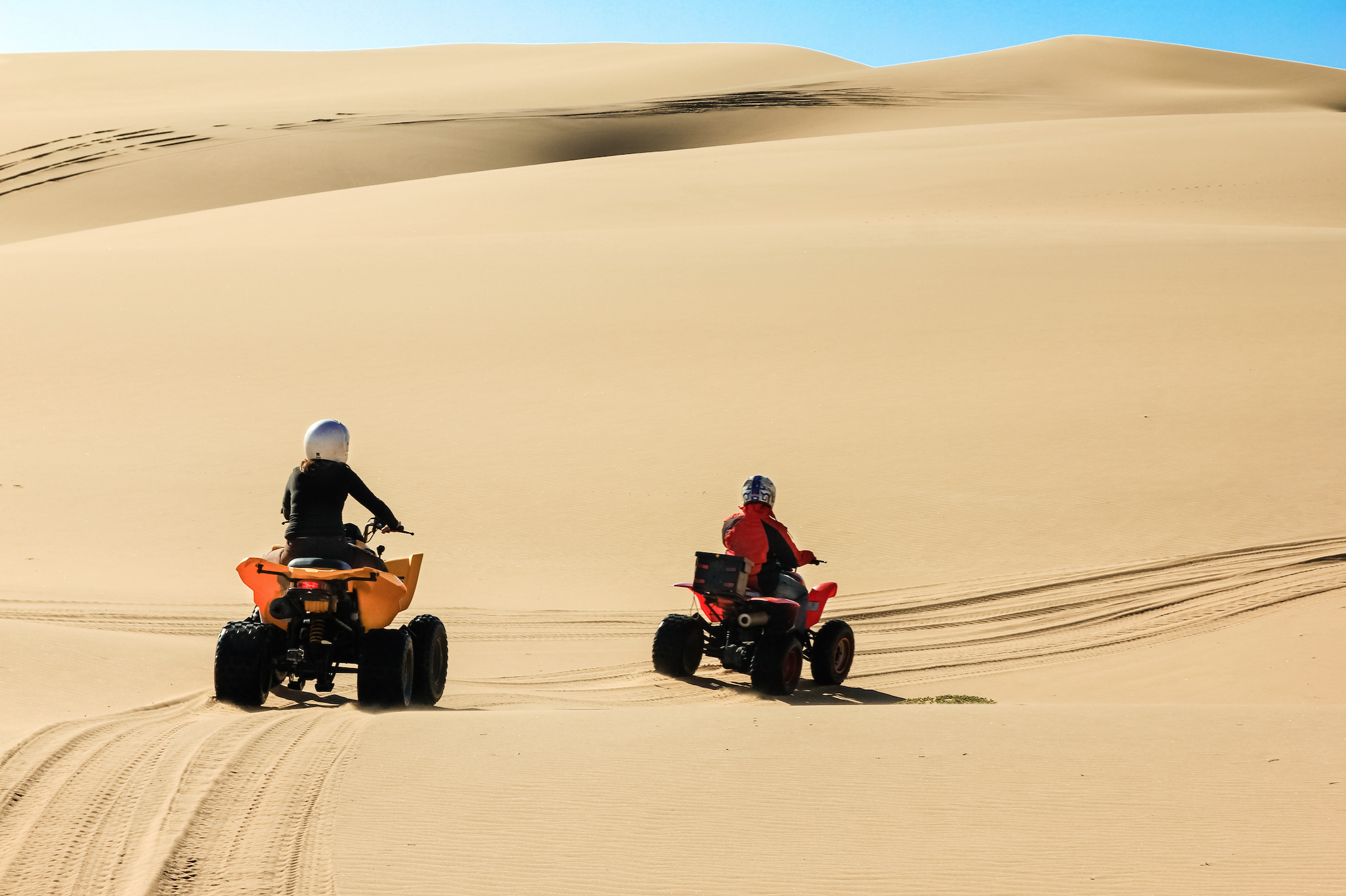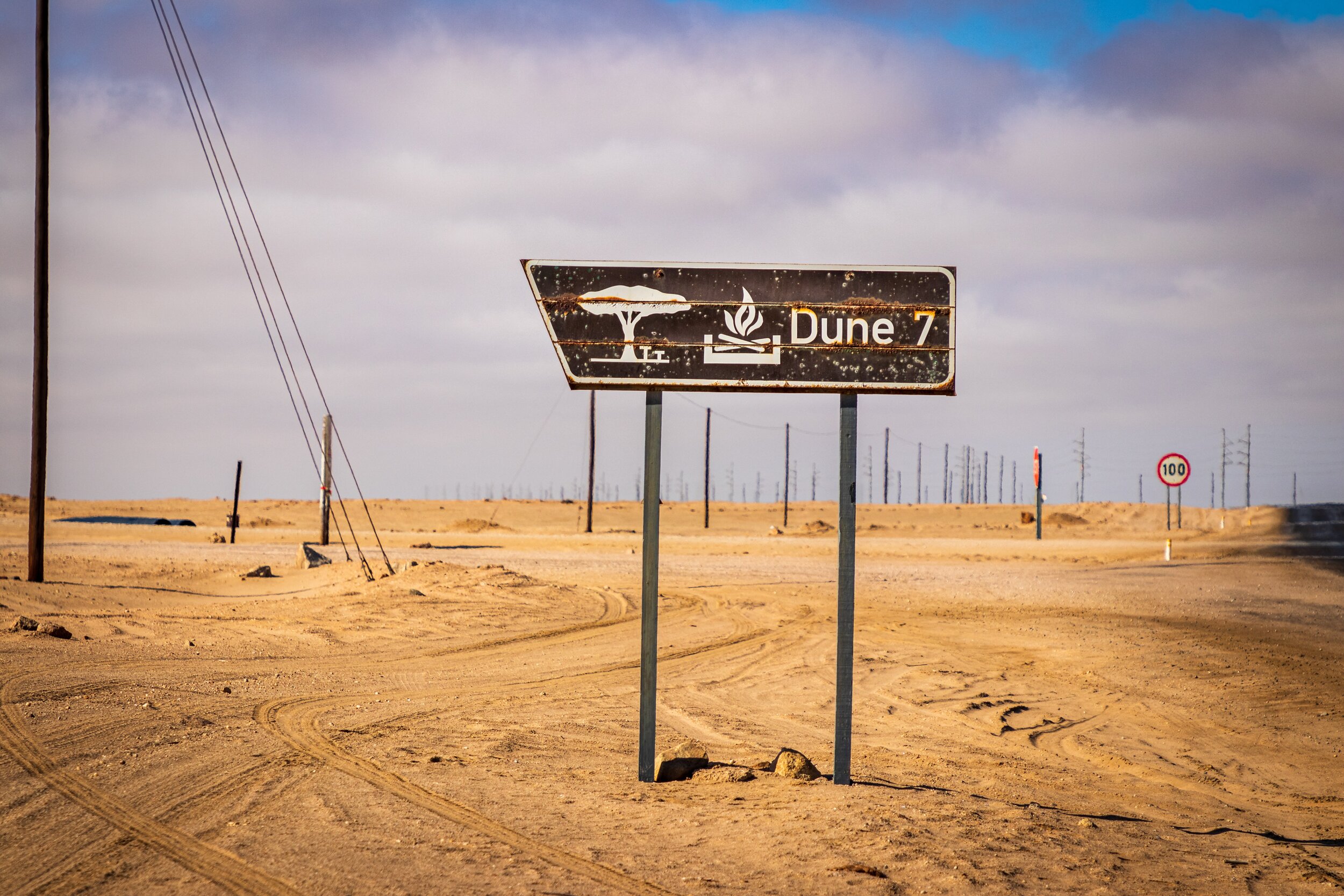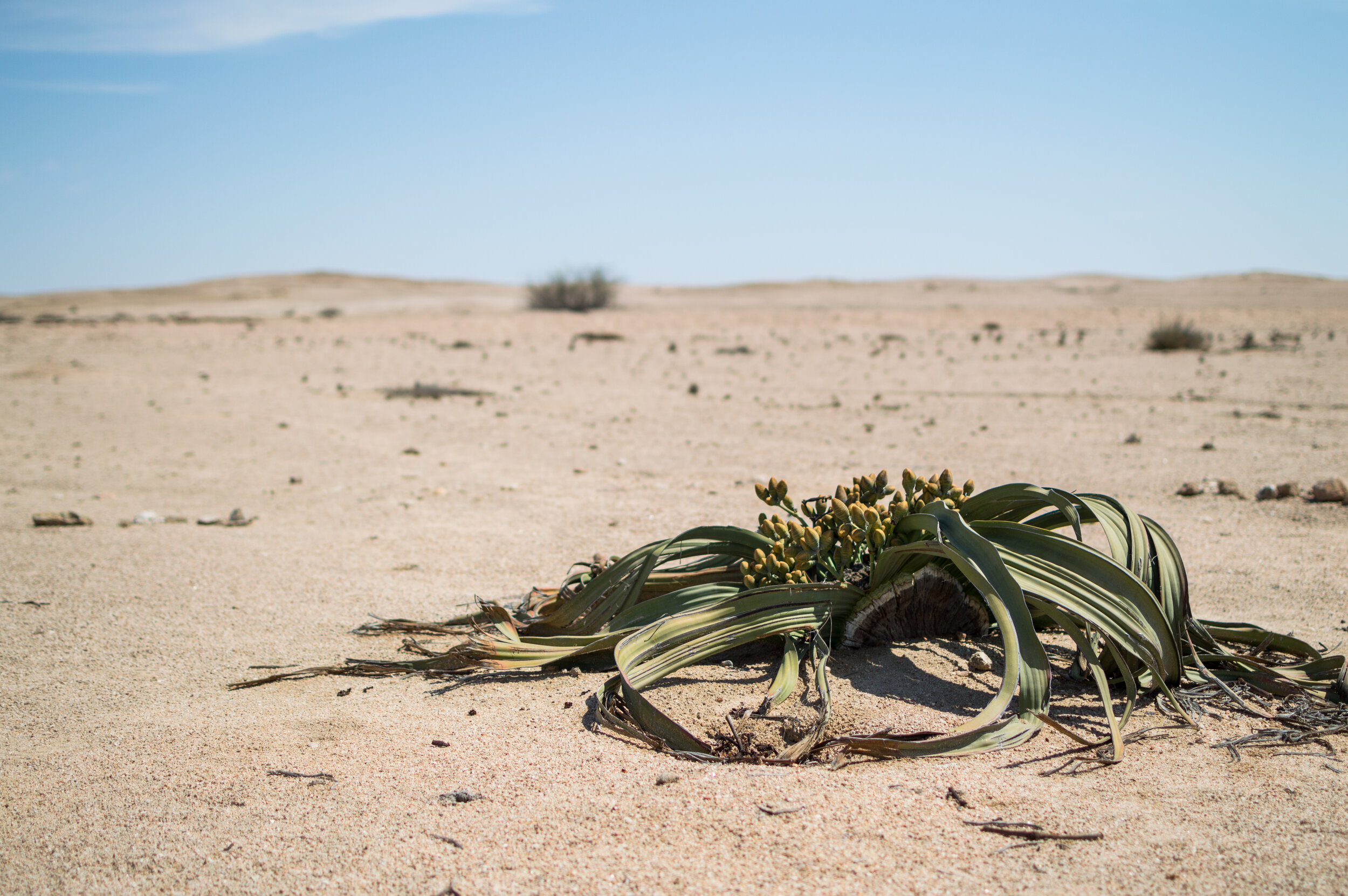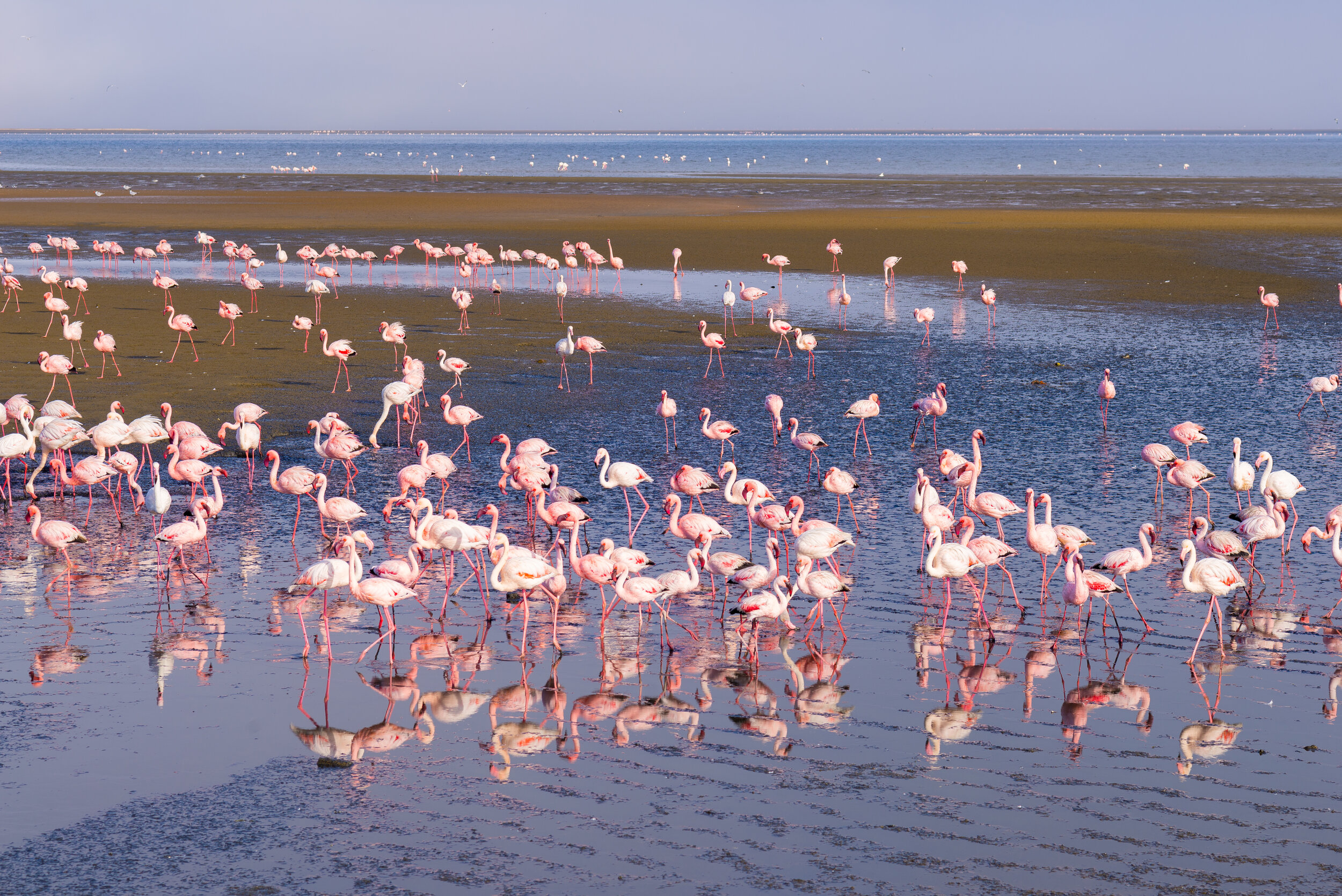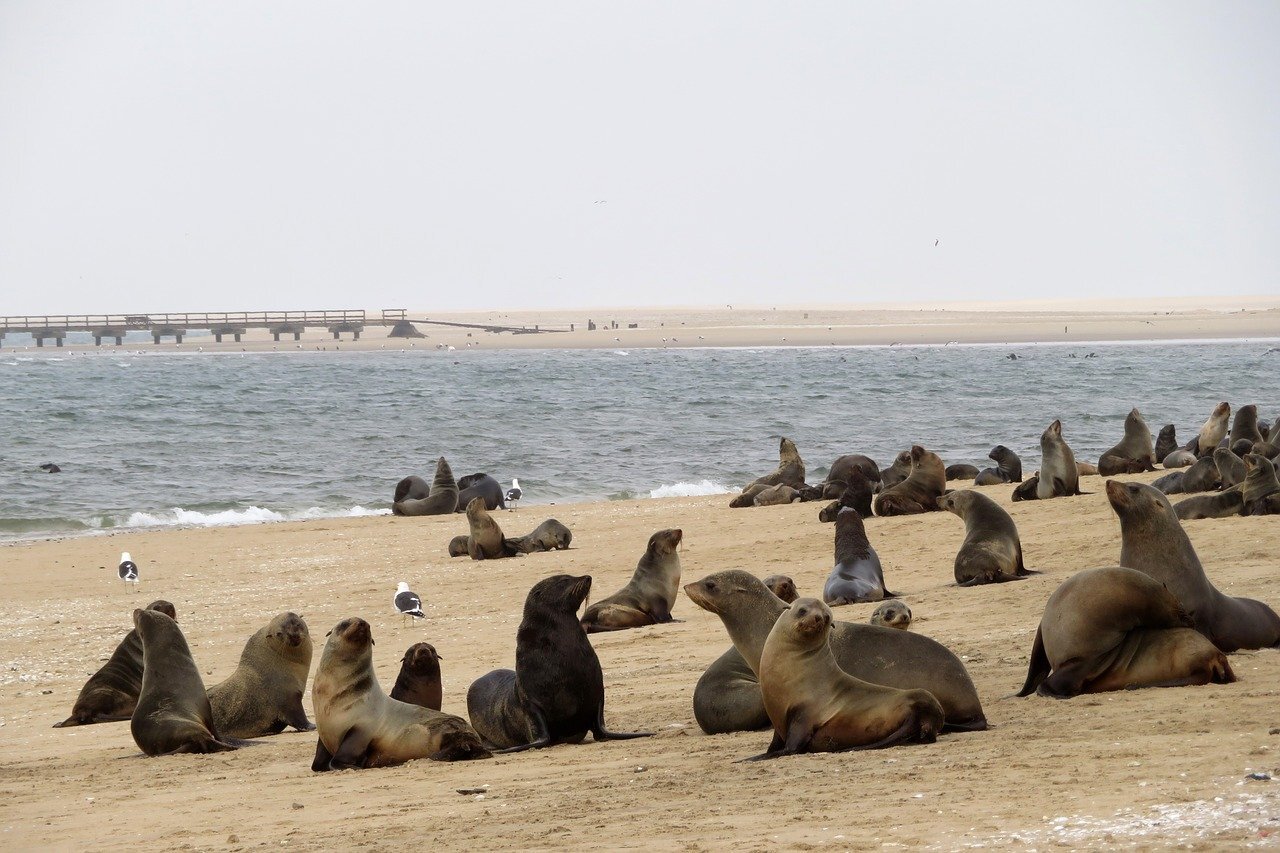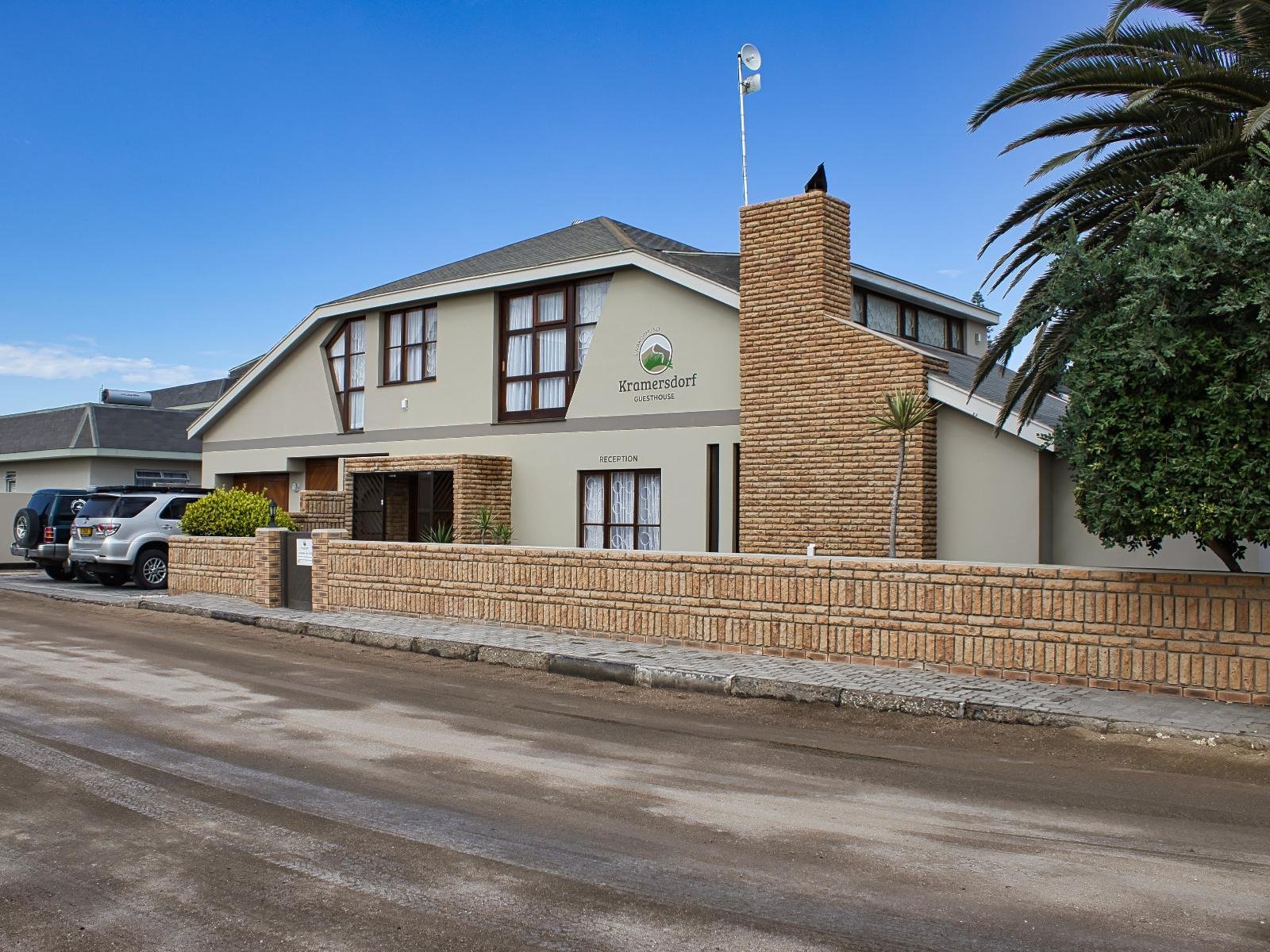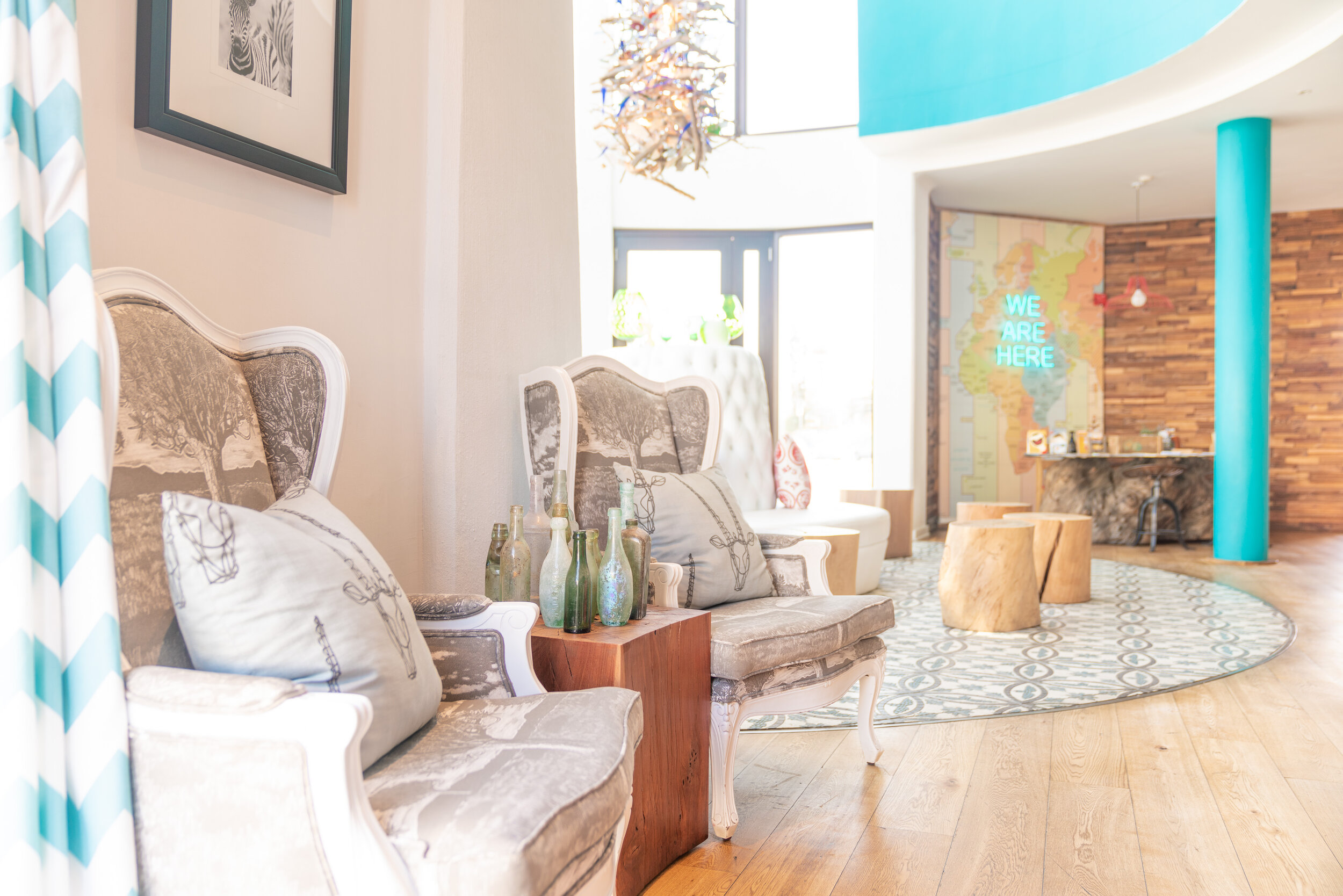A Complete Guide to Swakopmund
Written by Daryll Williams
Swakopmund may not be the country’s capital, but it's unquestionably Namibia's adventure and extreme sports hub, as well as the premier summer getaway spot. The name Swakopmund is derived from the German language meaning ‘mouth of Swakop’, alluding to historic overflow and flooding of the Swakop River. Its distinctly German flavour dates back to 1892, when German colonies settled down in the coastal town. Above all else, this marine city is a hugely popular holiday destination for tourists and locals alike and sees the harbour town of Walvis Bay just 30 minutes away. Swakopmund is also a convenient stopover for trips heading south into the Namib Desert and the Fish River Canyon; or northwards along the Skeleton Coast into Damaraland and eventually on to Etosha National Park.
Location
Affectionately known as ‘Swakop’ and popular with locals, this historic port makes for a small slice of Bavaria sandwiched between the deserts of the Namib-Naukluft National Park to the south-east and the more northerly Skeleton Coast. It has retained much of its colonial character, as buildings, street names and school systems still uphold German culture. Incredibly, Swakopmund is just 1 of 3 moderately substantial settlements along Namibia’s 1.600 km Atlantic coastline (the other 2 being Walvis Bay and Lüderitz). Nonetheless, the town’s resplendent seaside locale is arguably the best of the bunch.
How to get there
By road, it's about a 4-hour drive from Windhoek. By air, however, the closest airport to Swakopmund is in the town of Walvis Bay, a 30-minute drive away. Air Namibia offers regional flights and international arrivals that come from Cape Town, Johannesburg and further afield.
Best time to go
The best time to visit Swakopmund is from July to October, when the temperatures are just above 20°C and the chance of rain is low. This is also the best time for wildlife viewing experiences, making it peak travel season – occupancy is at its highest during the traditional peak season in August and September - so you’ll have to plan well in advance. Or you go off-season and save some bucks!
Overall, Swakopmund has tons of soft sands and a stunning coastline, perfect for rest, relaxation – or something altogether a bit more thrilling…
What to do
This lovely coastal community not only prides itself in neat palm-lined streets and colonial heritage – it eagerly offers a wide variety of activities.
Desert Tours and Dune 7
Make sure not to miss out on the largest sand dune of Namibia - Dune 7! Sandboarding, dune carting, and quad biking are waiting for you nearby. You might also want to make a trip into the surrounding Namib Desert and enjoy complete solitude coupled with superb scenery.
Water-based activities
Along the coast, there are fabulous boat cruises to spot dolphins and see the rich marine life. The area is a secret surfing spot, but the deep-sea diving and fishing are world-class. Just a hop and a skip away are Sandwich Harbour and Walvis Bay, which is where you’ll want to start.
Stroll the city
There aren’t many cities that offer quite as much to the traveller on foot as Swakopmund. The fascinating architectural buildings throughout the city make for some wonderful sightseeing. In terms of the architectural wonders you can visit, there’s the Altes Gefängnis prison which was built in 1909 and designed by Heinrich Bause; the Woerman House (climb to the top for wonderful views) was once a famous tower and is now a public library, as well as the crystal gallery, to name a few. Furthermore, you can sit down to dine in picturesque restaurants, grab a coffee and pastry at a local bakery and amble through old-fashioned streets as you browse vibrant curio-shops and take in the colonial history around you, or just mosey towards The Mole (the Swakopmund waterfront), which is within walking distance of many Swakop stays.
National Marine Aquarium
Namibia’s only aquarium showcases the fascinating marine life of the cold Benguela Current. Wander through an underwater walkway that affords close-up views of rays and sharks, or find yourself enchanted by the playful antics of the aquarium’s African penguins and Cape fur seals. Keen fishermen can also get an idea of the species that can be caught off Swakopmund’s beaches, including spotted grunter, silver cob, and west coast steenbras.
Wildlife, plant life & safari
There aren't many opportunities to do game viewing in the area, but botanists have long been lured to the Khan River and the oasis of Goanikontes in search of what have been called living fossils, the giant Welwitschia mirabilis. These extraordinary plants – the oldest living specimen is estimated to be 2.000 years old – never grow more than 2 metres above the ground, but the bigger plants have underground stems up to 4 metres long. The plant has just two leaves, usually tattered and torn, which droop in opposite directions. If one of the leaves dies, so does the entire plant.
Alternatively, day tours typically head south to Walvis Bay and embark upon a harbour cruise for the chance to see Cape fur seals, African penguins, and 3 species of dolphin (including the endemic Heaviside’s dolphin) up close. Birding trips take you to the Walvis Bay Lagoon, where thousands of lesser and greater flamingos congregate, and coastal rarities like the Damara tern may be spotted. North of Swakopmund lies the Cape Cross seal colony, one of the largest in the world. En route, you’ll stop to see the Skeleton Coast shipwreck, the Zeila. Want more info about the Skeleton Coast? Have a look at our complete guide to the Skeleton Coast.
However, if it’s a traditional safari you’re after, it’s best to head south into the Namib Desert, or northwards towards Damaraland and eventually aim for the country’s pride and joy: Etosha National Park.
Accommodation
Basic
This is the ideal destination if you are looking for ultimate style and luxury in a relaxing atmosphere. Accommodation consists of 6 chic rooms and 2 self-catering chalets.
Modern living meets spacious, private rooms at Organic Square. As its namesake suggests, organic is the name of the game come breakfast time, the products utilised throughout, and style of service provided. But, above all else, the guesthouse perfectly marries a sustainable existence without compromising comfort and style.
Located in Swakopmund’s old town, Kramersdorf Guesthouse oozes family and charm. Rooms are naturistically designed, with high, airy ceilings, muted colours and cosy wooden floors. Rest well knowing your chosen hosts are recycling, composting and minimising their single-use waste!
Mid-level
This cozy bed and breakfast features all the luxury of a hotel in a charming, family-run business setting that is a perfect base from which to explore Namibia’s Skeleton Coast.
Namib Guesthouse offers stylish and tranquil accommodation in Namibia's premier holiday destination. All the creature comforts of modern living, spacious and sunny rooms, scrumptious breakfasts, and warm hospitality are offered here.
This charming owner-run guesthouse is centrally situated but offers profound peace and quiet. All attractions, including the museum, shops, historic buildings, and restaurants are within walking distance.
Fancy
A short walk from Swakopmund’s centre, this vibrant hotel is a breath of fresh modern air in the historic town. Aside from its amenities, you’ll instantly love the place for its colourful designs and thoughtful hospitality.
Bang on the beach and featuring a rooftop pool, Beach Hotel Swakopmund offers bright, airy accommodation with a balcony and modern decor. There is also an à la carte restaurant, sun terrace, and a bar.
Situated on a unique and remote peninsula in Walvis Bay, with untouched beaches and the Atlantic Ocean on one side of the lodge and the Walvis Bay Lagoon on the other, Pelican Point is the place to unwind in one of the most enchanting and exquisite settings in Namibia.
How to include Swakopmund in your Namibia adventure
After a 4-5 hour drive to the west of Windhoek, Swakopmund reveals a seaside adventure mecca definitely worth including in your trip. Try one of these exciting trips for your Namibia adventure:
Classic Namibian Wonders
Begin your trip at the world’s most famous dunes at Sossusvlei, then head to salty Swakopmund before trading the sand for the rocky moonscape of Damaraland. To round up, end your trip with an exciting game drive through wildlife-brimming Etosha.
Ultimate Namibian Adventure
Start your trip in glorious Windhoek, and go on to see Etosha’s iconic wildlife. Next up, you’ll dip into Swakopmund’s coastal vibe before concluding the trip among Sossusvlei’s world-famous dunes.
Dunes & Deserts in 10 days
After crossing from the Kalahari to the Namib Desert, the iconic red sand dunes in Sossusvlei will be awaiting you. Enjoy a beachside break at Swakopmund before continuing to the Erongo mountains for more picturesque views.
Insider Tips
The towering sand dune of Dune 7 – the highest dune in Namibia – is approximately 5 km away and offers some of the best sand-based activities around.
If adrenaline isn’t your cup of tea, Swakop’s restaurants, cafés, art galleries, and museums are all stellar and definitely worth a visit.
Swakopmund is the perfect base for various day trips and excursions. You could stay in town for a week or two and see half of the country just by doing day trips from Swakopmund.
Stock up on groceries before heading out on a long road trip to your next stop.
With its cool breezes in contrast to Namibia’s desert interior, coastal Swakopmund is a popular small town with a real holiday feel. This unusual little place with its German architecture and some of Namibia’s best bakeries is the gateway to a natural playground you didn’t know you needed.
Ready to get the ball rolling on your Swakopmund adventure? Let’s get started.


